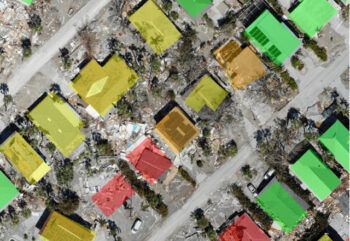2024-10-08 インペリアル・カレッジ・ロンドン(ICL)
ハムステッド・ヒースの池で犬が泳ぐことで、犬用のノミやダニ駆除薬に含まれる有害な農薬(イミダクロプリドとフィプロニル)が水に流出し、無脊椎動物に害を与えていることが研究で判明しました。これらの化学物質は農業では禁止されていますが、ペット用として広く使用されています。調査によると、ほとんどの犬の飼い主は環境への影響を知らず、予防的な使用が一般的です。研究者は、飼い主への意識向上と使用方法の見直しを提案しています。
<関連情報>
- https://www.imperial.ac.uk/news/256916/hampstead-heath-ponds-where-dogs-swim/
- https://www.sciencedirect.com/science/article/pii/S0048969724068426
都市保全地域における犬の遊泳と外部寄生虫駆除剤の水質汚染: ロンドンのハムステッド・ヒースにおける事例研究 Dog swimming and ectoparasiticide water contamination in urban conservation areas: A case study on Hampstead Heath, London
Lauren E. Yoder, Melanie Egli, Alexandra K. Richardson, Adrian Brooker, Rosemary Perkins, C.M. Tilly Collins, Jacqueline M. Cardwell, Leon P. Barron, Jeff Waage
Science of the Total Environment Available online: 2 October 2024.
DOI:https://doi.org/10.1016/j.scitotenv.2024.176686
Graphical abstract

Highlights
- Demonstrated environmental contamination by ectoparasiticides in urban ponds
- Imidacloprid and fipronil in dog ponds exceeded environmental toxicity thresholds
- Concentrations strongly correlated with levels of dog swimming
- Markers of wastewater contamination negligible in source waters
- Survey of owners who swim dogs identified opportunities for risk reduction
Abstract
Widespread occurrence of two ectoparasiticide compounds in the aquatic environment, imidacloprid and fipronil, have prompted concerns about their potential environmental impacts. However, very little focus has been placed on water bodies in urban green spaces used for dog swimming. In this study, occurrence of both substances on Hampstead Heath, London, was compared in ponds with (n = 3) and without dog swimming activity (n = 3), as well as connecting streams above, between, and below these ponds (n = 6). Imidacloprid and fipronil were detected at main swimming points in dog swimming ponds at mean concentrations of 309 ± 104 ng/L and 32 ± 13 ng/L, respectively, indicating a high environmental risk in all samples. Measured concentrations in ponds not accessible for dog swimming were either below the limits of detection or limits of quantification for both chemicals. Across all ponds, there was a strong positive correlation between measured dog swimming activities and concentrations of imidacloprid (R2 = 0.91) and fipronil (R2 = 0.79). Some contamination was detected in connecting streams between ponds. A wider chemical analysis for the presence of urban waste water chemical residue signatures indicated minimal contamination, including in source waters. A survey of visitors who allow their dogs to swim in the sampled ponds confirmed frequent use of products containing imidacloprid and fipronil. In total, 86 % of 101 dog owners were unaware of the potential environmental impacts of products, and 94 % indicated that protecting nature would be an important consideration when selecting products. Besides the current practice of limiting dog access to ponds, information collected on product use and dog swimming practices identified additional opportunities to reduce contamination. We suggest that more cooperation between industry, regulators, veterinarians, green space managers, and the public can reduce risks to urban biodiversity while maintaining recreational benefits for dog owners and dogs.



